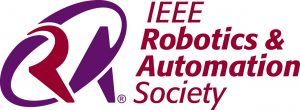Ken Goldberg
UC Berkeley
Talk Title: Getting a Grip on Robot Grasping: Metrics and Protocols for Reproducibility
Abstract: E-commerce has accelerated industry interest in robot grasping: a topic studied by the research community for over 60 years. The ability to robustly grasp arbitrary objects is a Grand Challenge for Robotics as note by Rod Brooks last year, stating that it is central for applications from warehouses to assembly lines to homes. Although many researchers now openly share code and data, it is currently difficult to compare and/or reproduce experimental results. In computer vision, the emergence of open benchmarks advanced the field considerably. Benchmarks also facilitate reproducibility to confirm results and focus on gaps in the state of the art. But in robotics, performance depends crucially on physical effects and it is not feasible (or desirable) for every lab to experiment with the exact same hardware and environment as it is important that methods ultimately work across sensors/robot arms/grippers. I’ll summarize an ongoing online discussion among researchers and propose a metric and reporting guidelines for experiments including details on sensors/lighting, robot hardware, grippers, and objects.
Thanks to: Jeff Mahler, Matt Mason, Alberto Rodriguez, Matei Ciocarlie, Rob Platt, Oliver Brock, Peter Corke, Stefanie Tellex, Aaron Dollar, Dmitry Berenson, Elena Messina, Holly Yanco, Howie Choset, Joe Falco, Juan Aparicio Ojea, Matt Matl, and Renaud Detry.
Bio: Ken Goldberg is an artist, inventor, and UC Berkeley Professor focusing on robotics. He was appointed the William S. Floyd Jr Distinguished Chair in Engineering and serves as Chair of the Industrial Engineering and Operations Research Department. He has secondary appointments in EECS, Art Practice, the School of Information, and Radiation Oncology at the UCSF Medical School. Ken is Director of the CITRIS “People and Robots” Initiative and the UC Berkeley AUTOLAB where he and his students pursue research in machine learning for robotics and automation in warehouses, homes, and operating rooms. Ken developed the first provably complete algorithms for part feeding and part fixturing and the first robot on the Internet. Despite agonizingly slow progress, he persists in trying to make robots less clumsy. He has over 250 peer-reviewed publications and 8 U.S. Patents. He co-founded and served as Editor-in-Chief of the IEEE Transactions on Automation Science and Engineering. Ken’s artwork has appeared in 70 exhibits including the Whitney Biennial and films he has co-written have been selected for Sundance and nominated for an Emmy Award. Ken was awarded the NSF PECASE (Presidential Faculty Fellowship) from President Bill Clinton in 1995, elected IEEE Fellow in 2005 and selected by the IEEE Robotics and Automation Society for the George Saridis Leadership Award in 2016. He lives in the Bay Area and is madly in love with his wife, filmmaker and Webby Awards founder Tiffany Shlain, and their two daughters. (goldberg.berkeley.edu @Ken_Goldberg)



